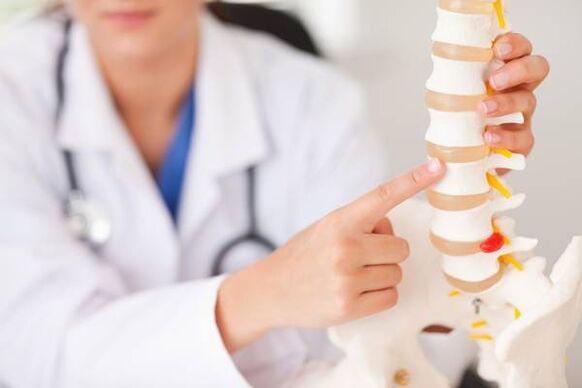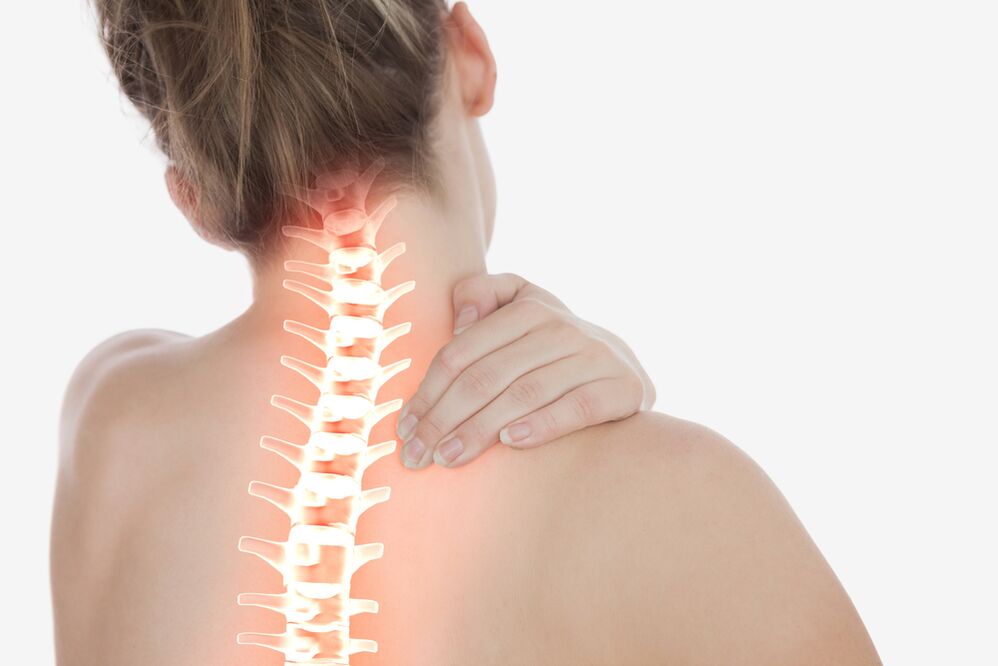Spinal cord disease in our time is considered a serious medical and social problem. Each second person aged 30 is suffering from different vertebrates. Osteochondrosis is diagnosed in 70% of the older age population.
What is osteochondrosis

Osteochondrosis is a neurological disease of a chronic nature. From the Greek language, this term has been translated as osteo - bone and chondros - cartilage.
As a result of the pathological destruction of the tissue, their elasticity and loss of original form are reduced. The distance between the vertebrae is reduced, and the spine is deprived of a stable balance. Distinguish between lumbar, thoracic and cervical osteochondrosis.
With regard to the weakening of the intervertebral discs in the body, irreversible pathological processes may begin to develop. With delayed treatment, such a process can lead to vertebral hernia and extension. Further, degradation of the spinal column joints and intervertebral ligaments may occur. All of these processes lead to the formation of bone processes - osteophytes.
Causes of the disease
Osteochondrosis develops according to a number of factors that depend and do not depend on a person. The main reasons lie the following:
In addition to the above reasons, the following can be distinguished:
Symptoms of osteochondrosis
The main symptoms in the disease can be called back pain and neck. The severity of the symptoms depends on the severity and stage of the disease. Osteochondrosis has a wide clinical appearance. This is due to the fact that the location of the intervertebral discs is established, hernia is formed, growth in the beads. All this leads to damaged blood supply, nerve clamps, a dysfunction in the spinal cord and the appearance of the surrounding vertebrate fibrosis.
With the development of osteochondrosis, the following symptoms begin to appear:
Depending on the area of the spine that strikes osteochondrosis, the symptoms may vary. With cervical osteochondrosis, pain in the hands and shoulders feels, the head begins to guess, "flies" periodically appear in front of the eyes. The lesion of the thoracic region leads to pain in the chest and heart region. The middle region declares itself to be pain in the lower back, which is given to the legs or organs of the pelvis.

With delayed treatment, the following disorders may appear:
The treatment of osteochondrosis
Osteochondrosis is treated with a fairly long period of time, about three months plus annual rehabilitation. Self -medication can worsen the patient's condition and he can take more time for treatment and healing.
Therapeutic procedures are performed in two areas: conservative therapy and surgical intervention are used. Moreover, the patient is prescribed the relevant diet and general recommendations are given for maintaining his health.
During conservative treatment, it is the purpose of stopping pain syndrome, normalizing the spine and preventing further dystrophic changes in a person's "axis". It is performed by the following methods:
Drug therapy
Target to remove pain syndrome and prevent inflammation of the spinal tissue components. At the same time, the goal is to improve the work of metabolic processes.
The following medicines are described:
Medications for osteochondrosis can be used as tablets, ointments, gels and injections. Ointments based on bee and snake poison have good ratings. Famous anesthetic ointments can be used without a prescription of a doctor to relieve muscle pain.
Ointments are used both during the period of deterioration of pain and for the prevention of osteochondrosis.
To stop pain and stop inflammation, various use of therapeutic blockade. They help reduce muscle-tonic syndrome. Among these blockades, the application has been found:
Physiotherapy
The procedure is needed to relieve severe pain in the spine area and near the adjacent organs. It is prescribed during the period of medication therapy and in the rehabilitation period to increase their effectiveness.
Physiotherapy is performed using the following tools:
Physiotherapy's physical education (exercise therapy), kinetherapy
This type of treatment is selected individually depending on the severity of the continuing processes, the phases and the age of the patient. The exercises are selected dosed and carefully. The purpose of such exercises is to correct behavior, normalize muscle tissue work, their flexibility. At the same time, the decompression of the nerve roots is exposed and the prevention of possible complications is performed.
The procedure allows you to normalize metabolism and feeding of the intervertebral discs, improves blood circulation, restores the distance of discs and vertebrae, allows you to distribute the load evenly throughout the supporting and motor apparatus.
Moreover, the following procedures have a good restoration effect:
With the effectiveness of conservative treatment, surgical intervention is used. The surgical method is also described for the strongest damage to the spine and its nearby organs.

Any kind of osteochondrosis can develop for many years in a location of localization. But at the same time, pathological processes can be formed in any part of the spine. Timely treatment guarantees a favorable prognosis and a complete cure of osteochondrosis.


















